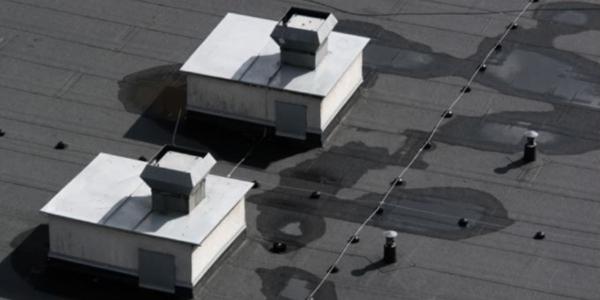Six Steps to Stay on Schedule No Matter What

By Lynn Connors, GCP Applied Technologies.
Accelerate your project workflow with these effective strategies designed for the COVID era and beyond.
While delays were magnified in 2020 due to COVID-19, construction projects have always been prone to obstructions. Delays could be caused for a myriad of reasons, including unworkable weather conditions or worker shortages. Government shutdown orders around the globe have caused worksites delays and with social distancing laws differing by state, supply chain disruptions and other constraints have grown in frequency. All of which lowers jobsite productivity.
Despite normal delays and these current unprecedented conditions, there are ways to mitigate their impact to the project schedule. The following are actions you can take to alleviate delays. These alternative and effective ways to stay on schedule include:
1. Examine permits: Consider the potential permits you'll need when choosing construction methods. Additional permits may add costs and delays to your project.
For example, waterproofing on decks has often been done using open flames (aka hot applied approach), and this requires additional permitting in some regions. That's why many waterproofing applicators have switched from hot-applied products to cold-applied liquid waterproofing such as the SILCOR® liquid waterproofing membrane. In addition to its safety benefits, cold-applied membranes offer cost savings related to labor, materials and equipment rentals. And they ultimately represent a more durable, safer solution.
2. Use products that eliminate steps: Look for construction products that effectively cut out application steps.
When examining building envelope products, choose primerless air barrier products to eliminate the use of primer. For instance, PERM-A-BARRIER® VPS 30 membrane can reduce installation time up to 35% compared to membranes requiring primer, which is significant in today’s fast-paced world.
On residential projects, self-adhered products are also available. They not only save time, but also provide a more effective protection compared to traditional house wrap. A fully adhered weather barrier, such as VYCOR® enV-S™ membrane, is an advanced alternative to traditional house wrap. This peel and stick weather barrier seals to the sheathing, itself and around the thousands of fasteners used to attach siding, trim and other decorative features. Self-adhered products expedite the project timeline.
When conducting floor installation, choose a floor moisture barrier that eliminates traditional installation steps. The KOVARA® AB 300 moisture barrier saves flooring contractors and building owners time and money with a quick and easy application process. Shot blasting is not required, and a self-leveling underlayment is only needed if the concrete subfloor is not flat. Once the KOVARA® AB 300 floor moisture barrier is applied, there is no waiting for cure time. It is ready to receive adhesive and finished flooring right away.
3. Use products that stand up to extreme climate conditions: Choose products that are unlikely to cause weather delays.
A solution in bridge construction is the Eliminator Bridge Deck Waterproofing, which is highly moisture resistant, so it can be applied in virtually any climate conditions. In addition, it allows temporary trafficking before paving with an aggregate broadcast into the waterproofing membrane. This helps to accelerate bridge construction - which is critical to keep traffic moving during refurbishment and new construction projects.
When it comes to installing air barriers, there are also rain resistant solutions that have recently become available. One of the most sprayable liquid STPE applied air barriers on the market, PERM-A-BARRIER® VPL 50RS membrane is rain resistant and can be installed in the most uncertain weather conditions, including temperatures down to 25° F.
4. Examine application methods: Look at application methods and speed when choosing new products.
The process of waterproofing is an area that offers many solutions to cut down on application time. PREPRUFE® Plus Waterproofing Membranes reduce the time and cost involved with installation. The system is immediately trafficable upon installation, so rebar can be installed the same day. Self-adhesive ZIPLAP™ watertight laps make it easy to tightly adhere membrane panels together, without the need for heat, power or special equipment. In addition, complex details can be tightly sealed by using PREPRUFE® tape and BITUTHENE® liquid membrane, providing an end-to-end watertight solution. It’s not just about selecting the membrane, but also how complementary products can seamlessly work together.
5. Look for performance and support behind the products: When examining a product, be sure to look at how the product manufacturer will support you. Will they offer technical service? Do they have a team of experts that will visit the building site to examine their products and guide the contractor on how to install them properly? And, what is the track record of their products?
As a manufacturer, GCP offers their field support team to provide expert technical consultation in real-time and training to install their products at the job site, avoiding costly delays and callbacks.
Most products have warranties, it is most important to look at the track record of the manufacturer and the proven performance of their products versus what their material warranty says. Have they been in business for a long time? Have their products performed well over many years? Do they have project profiles to prove performance? These are all more important considerations that will save time in the long run.
6. Leverage technology: Ten years ago when you walked onto a construction jobsite, there was little, if any, technology in use. Today, every project manager has a tablet and uses multiple tech products to manage a project. Contractors need to look at all of these offerings and decide which ones will have the most impact on their business day-to-day to work more efficiently. The use of apps and product innovations can propel a construction project forward.
One example is the VERIFI® in-transit concrete management system, which provides automated process monitoring and control during transit from the ready mix concrete plant to the jobsite by using sensors installed on concrete mixer trucks to monitor, measure and manage concrete properties in transit. The automation reduces rejected loads, increases jobsite efficiency and minimizes costly project delays. The technology also supports jobsite workers by giving them both on-site and remote visibility into the status of their current orders on the Contractor App. This allows for a reduced number of contractor personnel on the jobsite and minimal contact between producer and contractor. During COVID-19, this has meant built-in social distancing capabilities helping companies to prioritize the safety of their employees.
Apps are another useful tool to streamline processes. One new mobile application is the STRUX® Macrosynthetic Fiber Calculator app for use in different concrete applications. The app saves users time and resources in identifying the right amount and type of macro synthetic fibers needed for each concrete batch.
A number of online solutions have recently become available to make product selection easier and eliminate inaccuracy. A recent example is the MONOKOTE® UL Fireproofing Design Selector tool that enables contractors, architects, specifiers and structural engineers to accurately and efficiently determine the optimal GCP UL designs, those with the lowest thickness that meet a project’s needs.
Now more than ever there is demand to complete construction projects on time. Bringing projects back to business faster and with limited disruption is essential. Every decision made in any given phase of construction plays a pivotal role that then drives the overall productivity of the project. It is critical to examine each phase to see how you can accelerate it without compromise. Today, there are many high-performance product solutions that save time as well as automation technologies that fast forward traditional processes. By taking advantage of these time-saving solutions and stepping outside of routine procedures, a construction project can be accelerated to meet deadlines.
About the author
Lynn Connors is a Global Marketing Manager at GCP Applied Technologies. Lynn has over 15 years of experience growing emerging markets by bringing innovative solutions to market. She has held senior management positions at iRobot Corporation and Velcro USA Inc. Lynn has an Executive MBA from the University of New Hampshire.
Learn more about GCP Applied Technologies or visit www.gcpat.com.
Original article source: GCP Applied Technologies























Comments
Leave a Reply
Have an account? Login to leave a comment!
Sign In